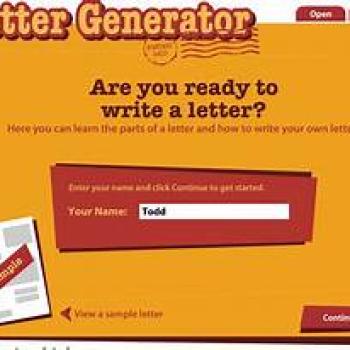Letter Generator

About this Interactive
Overview
The Letter Generator tool is designed to help students learn to identify all the essential parts of a business or friendly letter, and then generate letters by typing information into letter templates. A sample letter is included, and students can learn about the parts of a letter by reading descriptions of each part.
Once students have become familiar with letter formats, they are prompted to write their own letter. Students follow the steps and fill in specific fields in the template (for example, heading, salutation, closing, signature, and so on). They may even add a decorative border and postscript to the friendly letter. The finished letter can be saved, e-mailed, or printed.
This useful tool provides step-by-step instructions for familiarizing users with the necessary elements of written correspondence, and can serve as an excellent practice method for composing and proofreading both formal and informal letters.
Related Resources
- Student Interactives |
- Calendar Activities |
- Strategy Guides |
- Lesson Plans
The Postcard Creator helps students learn to identify all the typical parts of a postcard, and then generate their own postcard messages by typing information into letter templates. After printing their texts, students can illustrate the front of their postcards in a variety of ways, including drawing, collage, and stickers.
A little understanding can go a long way. After learning about difficulties that Palestinian youths face, students will write a letter to an official discussing these issues.
Students complete a short survey to establish their beliefs about technology. They compare their opinions to the ideas in a novel that depicts technology (such as 1984 or Fahrenheit 451).
Students discuss literature through a series of letter exchanges, as a one-time assignment or throughout the year with the students discussing, and making connections among, a number of literary works.
Students will research a local issue, and then write letters to two different audiences, asking readers to take a related action or adopt a specific position on the issue.